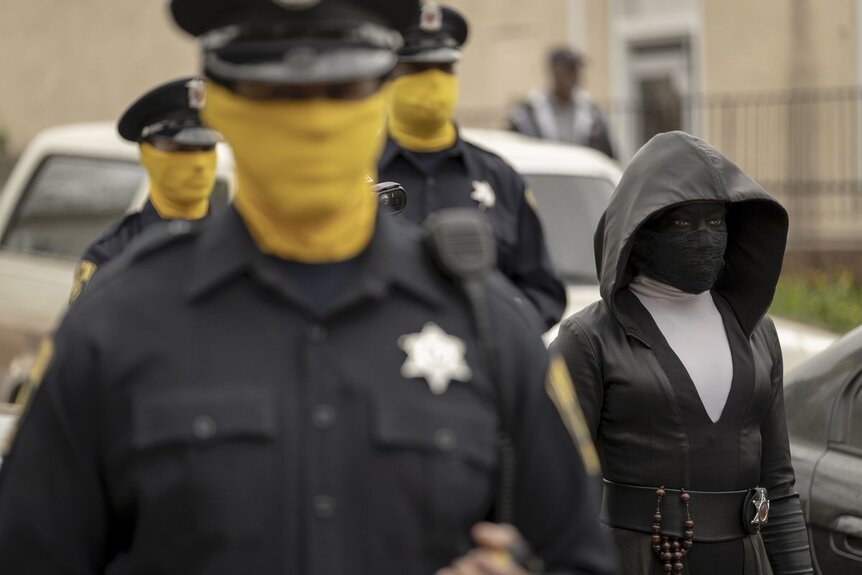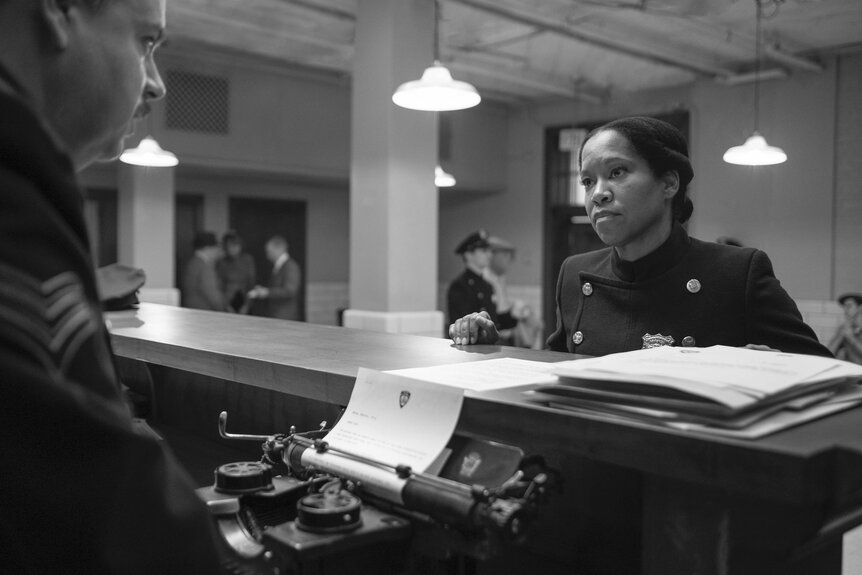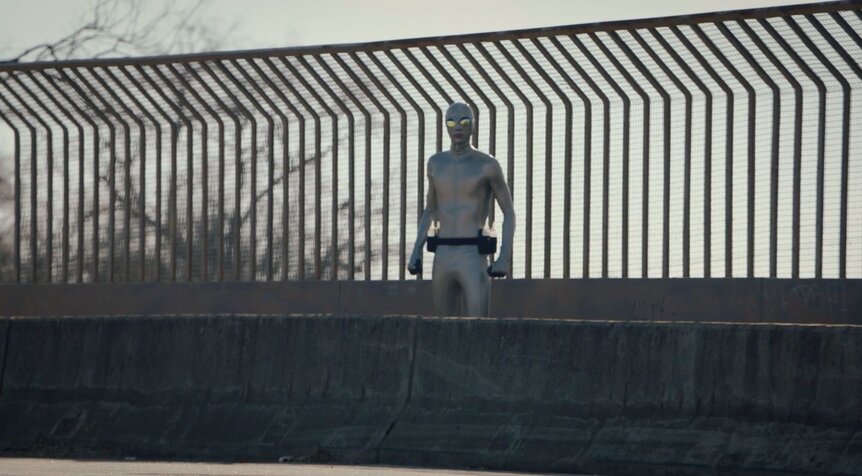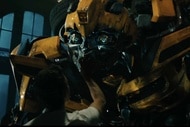Create a free profile to get unlimited access to exclusive videos, sweepstakes, and more!
Emmy Contenders: Watchmen cinematographer, Gregory Middleton talks Hooded Justice, Lube Man, more
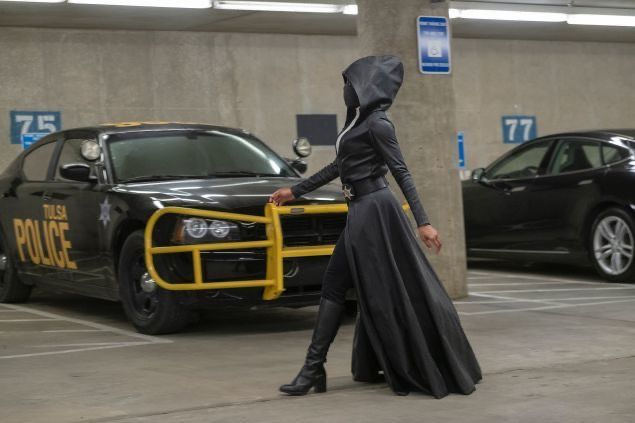
Welcome to Emmy Contenders 2020. This month, SYFY WIRE is speaking to some of the actors and artisans whose work earned them Emmy nominations this year. Today we speak with Gregory Middleton, cinematographer for HBO’s Watchmen.
The top-rank cinematography of Watchmen turns the show into a rare visual feast. The color palette is carefully restricted, emphasizing secondary colors over primary ones (save for yellow, of course), so that when red and blue show up, notice must be paid. (Hello Doctor Manhattan!) Flashbacks are conveyed in a sepia tone, a Nostalgia trip is done in stark black-and-white, and the show-within-a-show called American Hero Story is rendered in glorious over-saturations. Cinematographer Gregory Middleton, previously nominated for his work on Game of Thrones, shot the even-numbered episodes of Watchmen (2, 4, 6, and 8) and he chatted with SYFY WIRE about borrowing visual techniques from the original graphic novel, hanging Hooded Justice, and sliding around with Lube Man.
You posted on Instagram about one of the real-life parallels between Watchmen and current events, the presence of federal agents or law enforcement or possibly military who are not clearly identified, who are in a sense masked. It was an eerie image.
Yeah, we definitely slipped into some dystopian-feeling times. All the imagery in the show does come from real things, like police wearing masks. We just haven’t seen them in a while. So while it might seem like sci-fi is coming to reality now, there is a long history of officers without badges being used to break up labor protests, and we need to be mindful of this. It’s in your own city, and against people that you consider part of your citizenry.
How did your prior experience shooting a hanging on The Killing help shape the lynching scene with Will Reeves/Hooded Justice?
On The Killing, which I worked on with Nicole Kassell, Peter Sarsgaard’s character is an innocent man on death row. To watch him go through this -- he’s anticipating his own death, he’s being walked down death row, the hanging goes horribly, he chokes, his neck doesn’t break – it’s harrowing and heartbreaking. Both Nicky and I were in tears most of the days we were shooting that. One of the things that happened that I found so disturbing was that in anticipation of him being hung, they walk out onto the plank, he’s standing on the trap door, and they put the noose around his neck and a bag over his head. He’s panting and gasping, so the bag is moving with his breath, which to me was just a horrifying image. It really burned into me. He’s covered up by the bag, but in some way, we felt more connected to him.
So when we came to this section of Episode 6, the whole journey of that section of the episode, as Angela goes through this almost psychedelic journey of her grandfather’s life, we want to feel ourselves traveling through it. We did a couple tricks to make sure we could do a swap with a stunt person for Jovan Adepo, but after he gets knocked out by the police officers, we become his point of view.
We wake up, basically being dragged along the ground towards a tree. We see a rope thrown over a branch. We briefly go out of his point of view, as the noose goes over his head, and then we go back to his point of view as the bag goes over his head. We used the camera as him. We built a custom rig to drag him toward the tree, so it would be low on the ground. We hung the camera from a pulley system with two operators so it imitated the feeling of being yanked on by two heavy men.
And then the burlap bag over his head, I wanted to make it move, like he was gasping for breath. We put a small tube up to the matte box on the camera, and we had a bladder, so we could pump air through the tube and feel that bag moving. With the combination of that, and pulling focus to the bag, and the handheld action cameras, it imitated the feeling of swinging on the rope. It’s a strange thing, to use all these techniques to create something so visceral.
Apparently Eternal Sunshine of the Spotless Mind was one of your inspirations as well?
There were three films that Damon Lindelof put in the script that we were talking about, and that was one, blending of the nature of reality. At some point, it’s like his memories are being erased. And things, physically, are disappearing or becoming kind of confusing, they way they do in a dream. You turn around, the wall’s not there. You suddenly have sand on the floor, and the water’s coming in. It had to be surreal, for Angela reliving Will Reeves. Another reference was Birdman, because of the longer takes. We got into that with the first shot in the sequence, when Angela falls back and sort of lands in the chair on the stage with the other young officers. That one scene establishes the language of floating through this memory.
There’s another way you cue the audience in, leading them through the black-and-white episode with the color red?
I just loved that Damon seeded that concept with the episode before this one. When Looking Glass is talking to the woman from the Seventh Cavalry, she mentions a Spielberg movie about the giant squid attack from the end of the Watchmen comic, which is what he made instead of Schindler’s List, in this dystopian version. And they bring up the idea of the little girl in red, which we all known from Schindler’s List, which was a concept Spielberg used in this other story. This iconic filmmaker made a film about a different tragedy, but the techniques are still the same. And then we end up using the same technique. I think the real magic trick is that it feels surprising and inevitable.
You do a lot of match cuts, in a way that mirrors how Doctor Manhattan sees time. And you do a lot of deep focus that allows the audience to scan the frame as if it were a comic.
Exactly. And that’s because nothing is out of focus in a graphic novel. The Nostalgia pills are a great example, because that was one of the first things we shot like that. In Angela’s bakery with old Will Reeves, she pulls out the bottle of pills, and places them in the foreground. It’s just a simple split diopter shot. It’s one of the techniques we can use to create a big depth of field, and you can split the frame to have two objects in focus. That was something we kept trying to do, to find things that we could throw into the frame – like books or certain prop items that you’d recognize. If we were to do rack focus, you’re forcing the audience to look and making a big point of it. It’s more interesting to be able to let the audience decide where to look.
We need to talk about Lube Man.
[Laughs] We had this moment where Damon wanted a real burst of energy in the episode. Angela’s throwing away the evidence, and some mysterious person witnesses it. And Damon was determined to make that character something so preposterous that it was going to be like, “What the hell is going on?!” That’s his schtick, to be dressed in a silver jumpsuit and slip down drains. So it had to look ridiculous. [Stunt coordinator] Justin [Riemer] got a very skinny stunt performer. [Costume designer] Meghan [Kasperlik] was trying to figure out how to get all this texture in there, and I was like, “No, I think Damon wants him to just look like he’s been dipped in silver. The more ridiculous, the better.”
Then we were like, “How do we do the sliding?” I was like, “Well, we just do a Slip ‘N Slide thing, and then erase it.” And the visual effects team said, “Yeah, we can do that.” So we put that down on the ground, like you would in your backyard, so the actor could just slide. He’s not going to slide onto real concrete, but we have to make it look like he does. It’s a CG drain. So because the stunt guy is fairly safe, he can do it in a funny way. He can do the move he does and turn his head sideways and make it look like he’s trying to get through a tiny little area. It just got funnier, and funnier. It was totally absurd. [Laughs]
